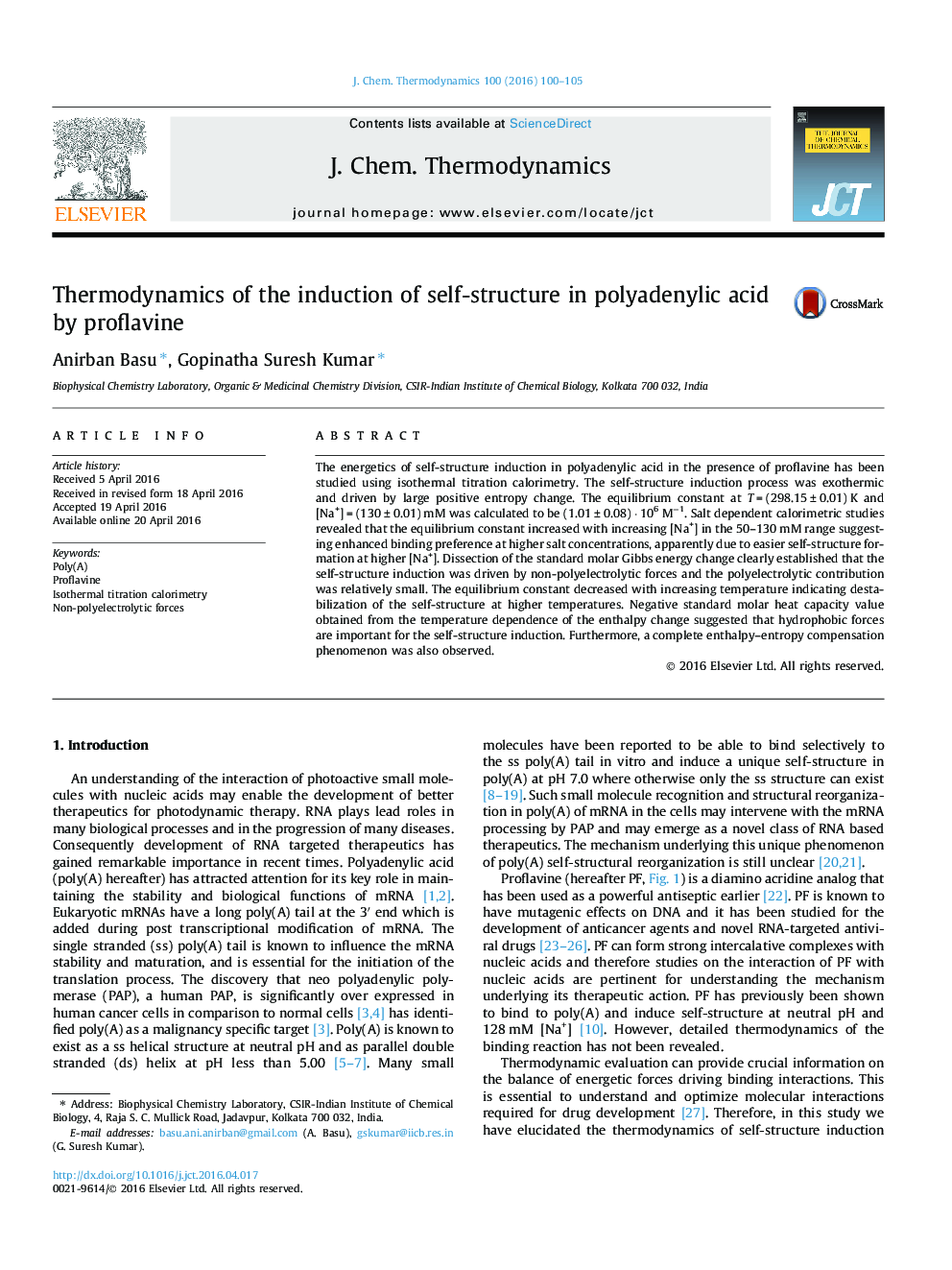| Article ID | Journal | Published Year | Pages | File Type |
|---|---|---|---|---|
| 214909 | The Journal of Chemical Thermodynamics | 2016 | 6 Pages |
•The energetics of self-structure induction in poly(A) by proflavine is presented.•The self-structure induction was favored by positive entropy and negative enthalpy.•The binding was favoured at higher salt concentrations.•Enthalpy–entropy compensation was also observed.
The energetics of self-structure induction in polyadenylic acid in the presence of proflavine has been studied using isothermal titration calorimetry. The self-structure induction process was exothermic and driven by large positive entropy change. The equilibrium constant at T = (298.15 ± 0.01) K and [Na+] = (130 ± 0.01) mM was calculated to be (1.01 ± 0.08) · 106 M−1. Salt dependent calorimetric studies revealed that the equilibrium constant increased with increasing [Na+] in the 50–130 mM range suggesting enhanced binding preference at higher salt concentrations, apparently due to easier self-structure formation at higher [Na+]. Dissection of the standard molar Gibbs energy change clearly established that the self-structure induction was driven by non-polyelectrolytic forces and the polyelectrolytic contribution was relatively small. The equilibrium constant decreased with increasing temperature indicating destabilization of the self-structure at higher temperatures. Negative standard molar heat capacity value obtained from the temperature dependence of the enthalpy change suggested that hydrophobic forces are important for the self-structure induction. Furthermore, a complete enthalpy–entropy compensation phenomenon was also observed.
